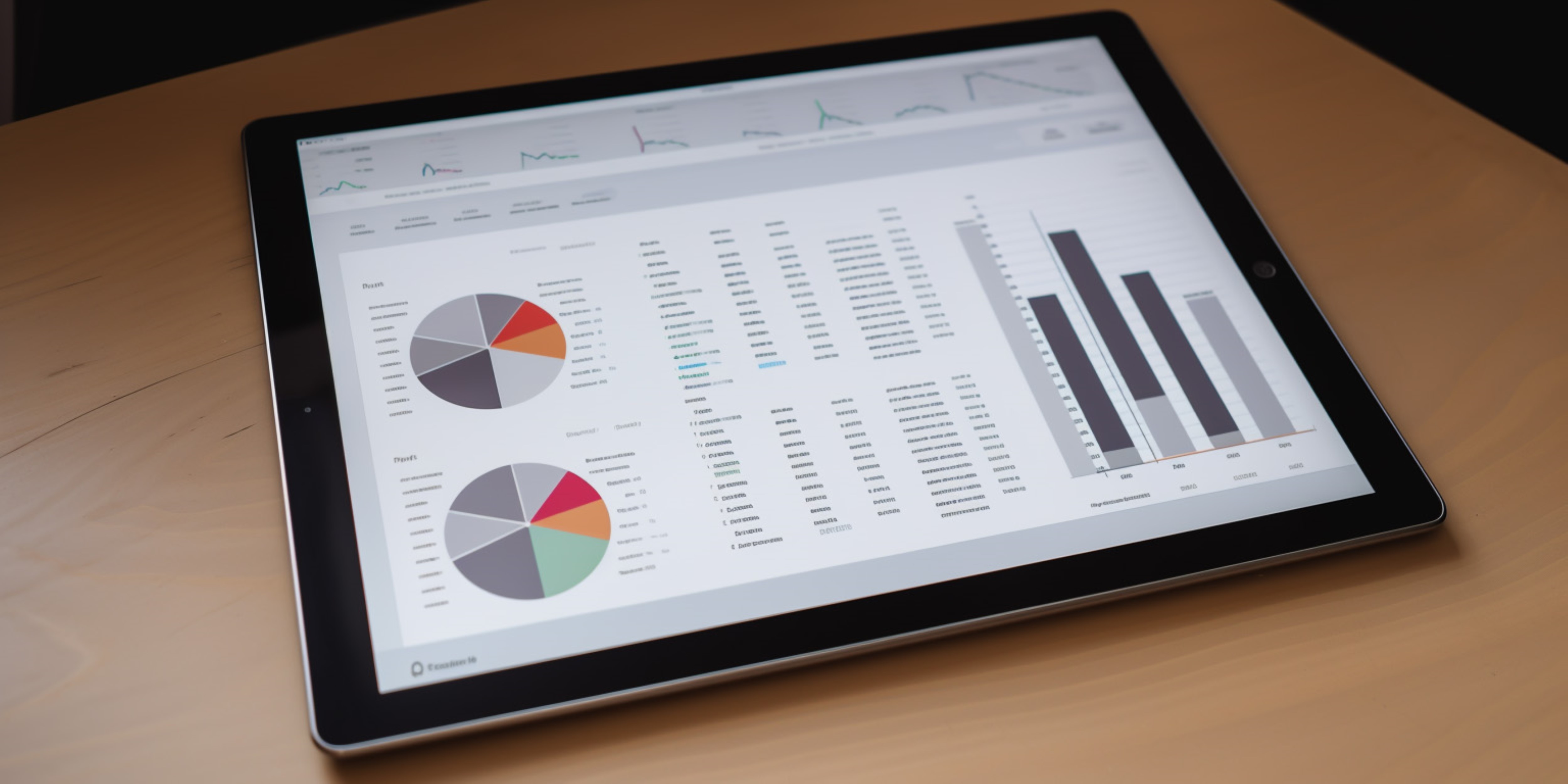CFO tools: the ultimate tech stack for maximum operational efficiency in your SME


Book a free consultation now!
The role of the CFO has changed – fast. Today’s finance leaders are expected to do more than close books and balance budgets. They must drive strategy, deliver insights, and keep operations running lean and efficient.
To do that, they need the right tools – not dozens of disconnected apps, but a focused, well-integrated CFO tech stack.
This guide outlines the best CFO tools – the essentials that make up a modern, no-fluff finance tech stack – one that we rely on in our day-to-day operations. These are the platforms, systems, and automations that streamline operations, improve decision-making, and keep your team focused on what matters.
If you're looking to upgrade your CFO toolbox or build a smarter finance stack from scratch, you can start right here.
Essential CFO tools for core financial management: ERP systems
This is your financial control center. ERP and accounting tools help you manage billing, payroll, compliance, and financial reporting while automating routine tasks to free up your team for more valuable work.
An ERP system integrates core business functions into a single platform – finance, accounting, procurement, payroll, inventory, HR, and more. It collects and manages structured data from across departments, enabling real-time tracking of business performance and simplifying cross-functional reporting.
For CFOs, this means full visibility into the numbers that matter most – revenue, expenses, cash flow, liabilities, and working capital. A well-configured ERP system supports everything from day-to-day bookkeeping to quarterly forecasting and long-term planning.
What kinds of data does an ERP process?
ERP systems pull together a wide range of data, including:
- General ledger
- Accounts receivable and payable
- Payroll and employee expenses
- Tax liabilities and compliance filings
- Sales and procurement transactions
- Inventory levels and asset valuations
- Bank feeds and reconciliation data
All of this flows into a central database, giving CFOs a single source of truth for financial and operational reporting.
Why it matters
ERPs Give CFOs centralized control over core financial processes, while doubling as a financial data warehouse.
Without an ERP, CFOs often work across disconnected spreadsheets, outdated tools, and manual inputs – an inefficient and risky setup. An ERP system streamlines these processes, automates data entry, and creates a live view of your company’s financial health.
Here’s how an ERP helps:
- Reduces manual work by automating invoicing, payroll, and reconciliations
- Improves accuracy by eliminating duplicate data entry and spreadsheet errors
- Enables real-time decision-making with up-to-date reporting
- Supports compliance with tax regulations, audit requirements, and internal controls
- Scales with your business by adapting to new teams, geographies, or workflows
Our recommendations
- SAP Business One – a robust system for scaling companies. Offers deep customization, built-in analytics, and strong support for manufacturing, retail, and service sectors.
- Xero – a cloud-native tool ideal for small finance teams. Easy to use, integrates with hundreds of add-ons, and offers real-time bank reconciliation and invoicing.
- QuickBooks Online – great for startups and microbusinesses. Covers the basics of accounting, billing, and cash flow with a clean UI and strong support community.
- NetSuite (Oracle) – a powerful ERP for mid-sized and enterprise companies. Combines financials, CRM, and supply chain in a single cloud platform.
Essential CFO tools for core financial management: invoicing and documentation
While ERPs form the backbone of financial operations, invoice and document management tools handle the day-to-day details that keep everything flowing – literally. These tools automate how finance teams capture, store, process, and track financial documents like invoices, receipts, payment confirmations, and supplier contracts.
For CFOs, they provide visibility, control, and efficiency at the document level, where every transaction begins.
What kinds of data does an invoicing system process?
Invoice and document management software automates the intake, classification, and processing of key financial documents. These systems typically use OCR (Optical Character Recognition) to extract data from scanned or digital files and then feed it into your ERP, accounting, or AP system.
This includes:
- Supplier invoices and purchase orders
- Customer invoices and payment receipts
- Cost documents (e.g. utilities, subscriptions)
- Bank statements and confirmations
- Tax records and e-invoicing logs
Many of these tools also integrate directly with national tax platforms or e-invoicing systems – automating compliance and audit readiness.
Why it matters
Managing financial documents manually is time-consuming and error-prone. Missing invoices delay payments. Duplicate entries skew forecasts. Incorrect tax data risks compliance fines. A modern CFO needs full transparency and control over what comes in and goes out – without adding unnecessary complexity to the finance team.
Here’s how these tools help:
- Reduce manual data entry by using OCR and automation
- Improve accuracy and auditability with digital records and timestamps
- Speed up approval workflows with automatic routing and status tracking
- Support compliance with tax authorities and e-invoicing mandates
- Provide real-time insight into liabilities, overdue payments, and spending patterns
For growing teams, they also help reduce accounting bottlenecks and eliminate reliance on paper-based processes.
Our recommendations
- Hubdoc (part of Xero) – captures and organizes bills, receipts, and statements. Syncs with Xero and QuickBooks and is designed for smaller finance teams looking to digitize quickly.
- Expensify – primarily used for employee expense management but also useful for processing receipts and low-volume vendor invoices.
- Dext (formerly Receipt Bank) – a popular tool for accounting firms and SMEs. Automates data extraction and pushes documents into major accounting platforms.
Essential CFO tools for data management
To make fast, accurate decisions, CFOs need reliable, connected data. A modern data warehouse consolidates financial and operational data into a single source of truth.
Spreadsheets – and why they are no longer enough
Tools like Google Sheets and Microsoft Excel still play a role in finance operations. They’re easy to use, flexible, and great for building quick forecasts or ad hoc reports. But when your team relies on spreadsheets as the primary source of truth, problems multiply fast.
Here’s why spreadsheets fall short:
- They’re hard to manage at scale – too many files, too many versions, too little control.
- They’re error-prone – manual data entry and copy-pasting increase the risk of incorrect numbers.
- They’re difficult to share securely – especially across departments, systems, and time zones.
- They’re disconnected from real-time systems – which means your data is often out of date.
Spreadsheets are fine for lightweight tasks, but they can’t support the speed, accuracy, or governance that modern CFOs need.
Data warehousing solutions
A financial data warehouse gives CFOs a centralized, structured, and scalable environment for storing and analyzing financial and operational data in one place. It’s the foundation of every intelligent finance stack.
A data warehouse is a centralized system that collects, stores, and organizes data from multiple sources – ERP systems, CRMs, payroll platforms, marketing tools, bank feeds, and more. It enables CFOs to consolidate all this data into a clean, structured format that’s ready for real-time analytics and reporting.
This is not just about storage – it’s about making your data useful.
What kind of data does it process?
A modern data warehouse ingests and processes:
- General ledger entries and P&L data
- Accounts receivable and payable
- Customer and vendor payment history
- Payroll and HR data
- Inventory and procurement records
- Sales performance and marketing spend
- Budget vs. actuals, cash flow statements, and forecasts
- Operational data such as production volume, service usage and others depending on the industry, segmented by different categories
Once processed, this data can feed into your ERP dashboards, forecasting models, compliance tools, and scenario analysis.
Why it matters
With a solid warehouse in place, CFOs can:
- Reduce data silos by bringing everything into one system
- Increase accuracy and consistency through automated data pipelines
- Generate real-time insights instead of waiting for monthly reports
- Build advanced analytics and forecasting models with confidence
- Support audit and compliance requirements with centralized, traceable records
It’s the difference between reacting to financial issues and proactively planning around them.
Our recommendations
- Snowflake – a modern data cloud platform that handles structured and semi-structured data at scale. Known for its flexibility, speed, and secure data sharing.
- Google BigQuery – a powerful, scalable data warehouse built for real-time analysis. Integrates smoothly with Sheets, Looker, and other tools in the Google ecosystem
- Amazon Redshift – AWS’s cloud data warehouse solution, widely used in enterprise finance environments. Strong integration with the broader AWS ecosystem.
The best CFO tools for accurate business intelligence
Modern CFOs are expected to do more than track what happened – they need to explain why it happened, what’s likely to happen next, and what to do about it. That’s where business intelligence (BI) tools come in.
BI platforms help finance teams transform raw data into real-time dashboards, trend reports, and strategic insights. They’re the engine behind faster decisions, more accurate forecasts, and stronger performance visibility across the company.
What types of data do BI tools use?
BI platforms connect to multiple systems and aggregate data such as:
- General ledger and P&L data
- Customer acquisition and retention metrics
- Sales pipeline and conversion data
- Cash flow and burn rate tracking
- Headcount and labor cost trends
- Marketing spend and ROI
- Inventory turnover and supply chain metrics
- Operational data such as production volume, service usage and others depending on the industry, segmented by different categories
For CFOs, it’s about seeing the full picture – not just the numbers in isolation.
Why it matters
Strong BI capabilities turn CFOs into proactive, strategic leaders. You no longer rely on static reports that lag behind the business – you operate with live data and self-serve analytics at your fingertips.
Here’s how BI tools support CFO responsibilities:
- Improve speed and confidence in decision-making
- Enable scenario planning and what-if modeling
- Align finance with sales, marketing, HR, and operations
- Drive accountability with shared KPIs and transparent metrics
- Support investor and board reporting with real-time data
Finance no longer plays catch-up. With BI, the CFO becomes a driver of insight across the business.
Our recommendations
- Omni – a next-gen BI tool designed for live, collaborative metrics. Ideal for CFOs who want real-time dashboards with a shared semantic layer and fast, flexible setup.
- Tableau – widely adopted in enterprise environments. Powerful visualizations and a large feature set, but requires more setup and training.
- Power BI – Microsoft’s BI platform, tightly integrated with Excel and Office 365. Strong modeling capabilities and widely used in finance-driven teams.
- Qlik Sense – known for its associative data model and fast, in-memory processing. Enables CFOs to explore data across multiple dimensions and uncover insights that traditional query-based BI tools might miss.
Essential CFO tools for cash flow management
No CFO tech stack is complete without tools that help you control cash flow and streamline payments. Visibility into inflows and outflows is critical – not just for liquidity, but for forecasting, planning, and growth. The right platform lets you move faster, reduce friction, and stay in sync with your accounting system.
That’s where cash flow management tools come in. These systems help CFOs track, forecast, and optimize the movement of money, giving them the clarity to make confident decisions and the agility to adapt when needed.
What kinds of data do these tools use?
- Accounts receivable and payable
- Bank transactions and balances
- Subscription and recurring revenue data
- Payroll and contractor payments
- Taxes, loans, and scheduled liabilities
- Sales pipeline and contract revenue forecasts
This data feeds into cash flow projections, burn rate calculations, scenario planning, and payment scheduling.
Why it matters
Every CFO knows that profitability doesn’t always equal solvency. You can be hitting your revenue targets and still run into trouble if cash flow isn’t timed correctly. These tools help finance leaders:
- Track liquidity in real time
- Model best- and worst-case scenarios
- Identify late payments or bottlenecks
- Improve working capital management
- Plan for upcoming expenses and obligations
- Communicate clearly with stakeholders, banks, and investors
They turn cash flow from a reactive process into a strategic lever.
Our recommendations
- Stripe – more than a payment processor, Stripe gives CFOs real-time visibility into receivables, subscription revenue, and payment trends. It automates reconciliation and integrates with your finance systems to provide a live view of cash position.
- Agicap – built specifically for cash flow forecasting and monitoring. Connects to your bank and accounting tools to offer dynamic, scenario-based cash planning for SMBs and mid-market companies.
- Pulse – a simple yet powerful tool for startups and SMBs. Helps teams project cash flow, compare scenarios, and track actuals vs. forecasted cash on a weekly basis.
- Tesorio – focuses on AR automation and collections intelligence. Ideal for finance teams looking to accelerate cash inflow and forecast revenue collection with precision.
Essential CFO tools for HR data management
People are one of the biggest assets – and cost centers – in any business. That’s why modern CFOs can’t afford to overlook HR data in their financial operations. From payroll to headcount planning, workforce data plays a central role in budgeting, forecasting, and long-term financial strategy.
HR data management tools give CFOs the insight and control they need to align people-related costs with broader business performance, helping finance teams make smarter, faster decisions about staffing, productivity, and resource allocation.
HR data management tools track, store, and analyze workforce-related information. These platforms help HR and finance teams collaborate around employee data such as:
- Time-off and attendance records
- Salaries, bonuses, and benefit costs
- Headcount by department, role, or location
- Recruitment, onboarding, and attrition metrics
- Remote work trends and labor productivity
- Payroll obligations and compliance reporting
These tools either integrate with, or feed into, payroll software, ERP systems, or workforce planning platforms – ensuring the finance team always works with accurate, up-to-date employee data.
Why it matters
For CFOs, labor is not just a line item – it’s a key driver of margin, profitability, and strategic growth. Without real-time access to workforce metrics, finance teams are flying blind when it comes to:
- Forecasting personnel costs
- Allocating budgets to departments or teams
- Planning for seasonal or project-based hiring
- Evaluating return on human capital investments
- Ensuring payroll accuracy and legal compliance
With the right tools in place, CFOs gain a clearer understanding of where their workforce spend is going – and how it aligns with business goals.
Our recommendations
- Calamari – a user-friendly leave and attendance tracker designed for distributed teams. Syncs with calendars and HR systems, making it easier to monitor absences, approve requests, and plan payroll based on real attendance data.
- Personio – a comprehensive HR platform for small and mid-sized companies. Combines recruiting, HR admin, and payroll tools into a single system – with finance-friendly features like cost center tagging and compensation tracking.
- BambooHR – popular in North America, BambooHR focuses on employee lifecycle management, including performance, onboarding, and workforce reporting – ideal for finance teams tracking total employee cost over time.
How does the RST Modern Data Platform ease core CFO functions?
A modern data platform isn’t just a backend solution – it’s the foundation that powers everything a CFO needs to do. From real-time forecasting to compliance, strategic planning, and performance tracking, all of it starts with having the right data infrastructure in place.
Here’s how a modern data stack supports CFOs in their day-to-day responsibilities:
- It centralizes all financial and operational data: CFOs often deal with fragmented data from ERP systems, CRMs, HR tools, spreadsheets, and third-party apps. A modern data platform brings all that together into a single source of truth – no more reconciling inconsistent numbers or waiting on different teams for updates.
- It creates a reliable foundation for real-time reporting: with a modern stack, your reporting isn’t delayed by exports and manual updates. Instead, data flows automatically from systems into your warehouse and dashboards.
- It improves audit readiness and regulatory compliance: data governance, version control, and automated audit trails are built into the stack. That means every number is traceable – from a dashboard all the way back to the source.
- It unlocks advanced analytics and forecasting: once data is structured and unified, CFOs can go beyond static reports. You can run automated margin analysis, model cost scenarios, or segment profitability by product, region, or customer type – all without relying on IT for every query.
- It enables scalable, efficient operations: whether your company is growing fast or expanding into new markets, a modern platform scales with you. You don’t need to rebuild systems each time you add a new tool or enter a new region.
Bottom line: a modern data platform is the backbone of a modern CFO office. It gives you control, clarity, and confidence – across every function and at every stage of growth.
Lead with impact with a smarter set of CFO tools
Building the right CFO tech stack takes more than picking the latest tools. You need systems that work together, fit your workflows, and scale with your business. That’s where we come in.
We help finance teams design and implement lean, integrated finance stacks built for real-world performance. Our team brings deep expertise in ERP integration, data warehousing, business intelligence, and automation – all tailored to the needs of modern CFOs.
You won’t get a bloated setup full of tools you don’t need. We focus on just enough – the essential CFO tools that boost efficiency, improve visibility, and help your team make better decisions, faster. From custom dashboards to secure infrastructure, we deliver solutions that fit your strategy and support your growth.
Let’s build a smarter CFO tech stack – and set your finance team up to lead with impact.


